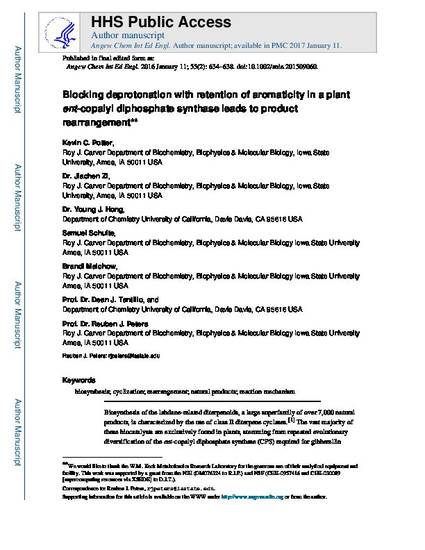
Biosynthesis of the labdane-related diterpenoids, a large superfamily of over 7,000 natural products, is characterized by the use of class II diterpene cyclases.[1] The vast majority of these biocatalysts are exclusively found in plants, stemming from repeated evolutionary diversification of the ent-copalyl diphosphate synthase (CPS) required for gibberellin phytohormone biosynthesis – i.e., via gene duplication and neofunctionalization.[2] As implied by this evolutionary scenario, these enzymes must exhibit catalytic plasticity that enables new products to readily arise. Consistent with this hypothesis, we have shown that substitution of smaller residues for the catalytic base group can lead to the incorporation of water, yielding hydroxylated products.[3] Here it is reported that larger aromatic replacement of the histidine from the catalytic base group leads to even more profound alteration of product outcome, rearrangement via a series of 1,2-hydride and methyl shifts. Coupled with additional mutational analysis and quantum chemical calculations, this clarifies the catalyzed reaction and underlying enzymatic structure-function relationships of the ancestral CPS.
Available at: http://works.bepress.com/reuben_peters/73/

This is the peer reviewed version of the following article: Potter, K. C., Zi, J., Hong, Y. J., Schulte, S., Malchow, B., Tantillo, D. J. and Peters, R. J. (2016), Blocking Deprotonation with Retention of Aromaticity in a Plant ent-Copalyl Diphosphate Synthase Leads to Product Rearrangement. Angew. Chem. Int. Ed., 55: 634–638, which has been published in final form at doi:10.1002/anie.201509060. This article may be used for non-commercial purposes in accordance With Wiley Terms and Conditions for self-archiving.